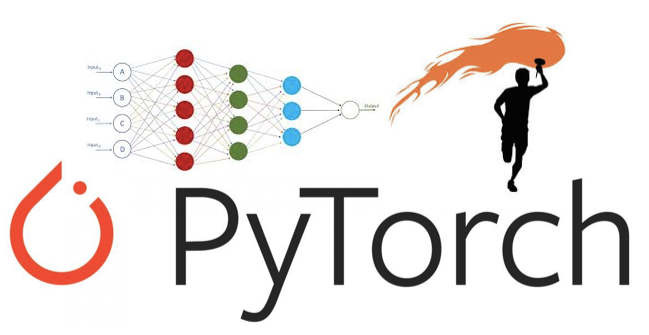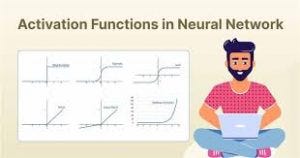How to PyTorch Leaky ReLu Activation Function Python: 100%

The PyTorch Leaky ReLU Activation Function is a powerful tool for neural networks. The Leaky ReLU activation function is a valuable addition to the toolbox of activation functions in deep learning. Its ability to mitigate the dying ReLU problem and preserve negative information makes it a powerful choice for various neural network architectures and applications.
In this blog post, we will delve into the PyTorch implementation of the Leaky ReLU activation function and explore its benefits and applications.
What is the Leaky ReLU Activation Function?
The leaky ReLU function is an extension of the traditional ReLU activation function. While the ReLU function discards negative inputs, the Leaky ReLU introduces a small, non-zero slope for negative inputs instead of setting them to zero. This prevents the “dying ReLU” problem and allows for the propagation of small negative gradients during backpropagation.
By leveraging the implementation of the PyTorch Leaky ReLU, you can unlock the potential of this activation function and enhance the performance of your models.

Implementing the Leaky ReLU in PyTorch:
PyTorch provides a simple yet powerful way to incorporate the Leaky ReLU activation function into your neural network models. By utilizing thetorch.nn.LeakyReLU module, you can easily introduce the Leaky ReLU function to specific layers or the entire network.
Benefits of the Leaky ReLU Activation Function:
- Avoiding the “dying ReLU” problem: The Leaky ReLU addresses the issue of dead neurons that can occur with the traditional ReLU function, allowing for better information flow in the network.
- Preserving negative information: The non-zero slope of the Leaky ReLU retains some negative values, which can be beneficial for certain types of data or network architectures.
- Improved training performance: The Leaky ReLU can accelerate the convergence of neural networks by providing a continuous and non-zero derivative for all input values.
Applications of the Leaky ReLU Activation Function:
- Image classification: The Leaky ReLU has been shown to perform well in image classification tasks, especially when dealing with complex datasets containing a wide range of features.
- Generative models: The Leaky ReLU can be beneficial in generative models like GANs (Generative Adversarial Networks), helping to capture subtle details and improve the overall quality of generated samples.
- Natural language processing: The Leaky ReLU can be applied to various natural languages processing tasks, such as sentiment analysis or text classification, where it can effectively handle both positive and negative sentiments.
Pytorch Leaky Relu activation function Python example:
Here’s an example of how to use the Leaky ReLU activation function in PyTorch with Python code:
import torch import torch.nn as nn # Define a simple neural network module class MyNet ( nn.Module ): def __init__ ( self ): super(MyNet, self).__init__() self.fc1 = nn.Linear(10, 5) self.leakyrelu = nn.LeakyReLU() def forward ( self, x ): x = self.fc1(x) x = self.leakyrelu(x) return x # Create an instance of the network net = MyNet() # Generate some random input data input_data = torch.randn(1, 10) # Pass the input through the network output = net(input_data) # Print the output print(output)
In this example, we define a simple neural network module called MyNet, which consists of a linear layer followed by a PyTorch Leaky ReLU activation function. We then create an instance of the network, generate some random input data, and pass it through the network using the forward method. Finally, we print the output of the network.

Here’s an example of how to use the Leaky ReLU activation function in a neural network using PyTorch:
import torch import torch.nn as nn # Define a neural network class class MyNet ( nn.Module ): def __init__ ( self ): super(MyNet, self).__init__() self.fc1 = nn.Linear(10, 5) self.leakyrelu = nn.LeakyReLU() def forward ( self, x ): x = self.fc1(x) x = self.leakyrelu(x) return x # Create an instance of the network net = MyNet() # Generate some random input data input_data = torch.randn(1, 10) # Pass the input through the network output = net(input_data) # Print the output print(output)
In this example, we define a neural network class MyNet that has a linear layer ( nn.Linear) followed by a PyTorch Leaky ReLU activation function ( nn.LeakyReLU). In theforward method, we apply the linear transformation to the input data and then pass it through the Leaky ReLU activation function. We then create an instance of the network, generate some random input data, and pass it through the network using the instance. Finally, we print the output of the network.

PyTorch Leaky ReLu
- Addressing the “dying ReLU” problem: The Leaky ReLU helps mitigate the issue of “dead” neurons that can occur with the standard ReLU function. By introducing a small negative slope for negative inputs, the Leaky ReLU allows for the backpropagation of gradients even when the neuron is in the saturated region.
- Preserving negative information: Unlike the ReLU function, which sets all negative values to zero, the Leaky ReLU retains some negative values by introducing a non-zero slope. This characteristic can be advantageous when handling data or network architectures where negative information is meaningful or relevant.
- Training deep neural networks: The Leaky ReLU can aid in training deep neural networks by preventing the occurrence of “dead” neurons and providing a continuous and non-zero derivative for all input values. It promotes better information flow and can help improve the convergence and learning capabilities of the network.
- Handling vanishing gradients: The Leaky ReLU can help alleviate the vanishing gradient problem, which can occur during backpropagation in deep neural networks. By allowing the propagation of small negative gradients, the Leaky ReLU helps maintain non-zero gradients and facilitates the flow of information during training.
See More:




